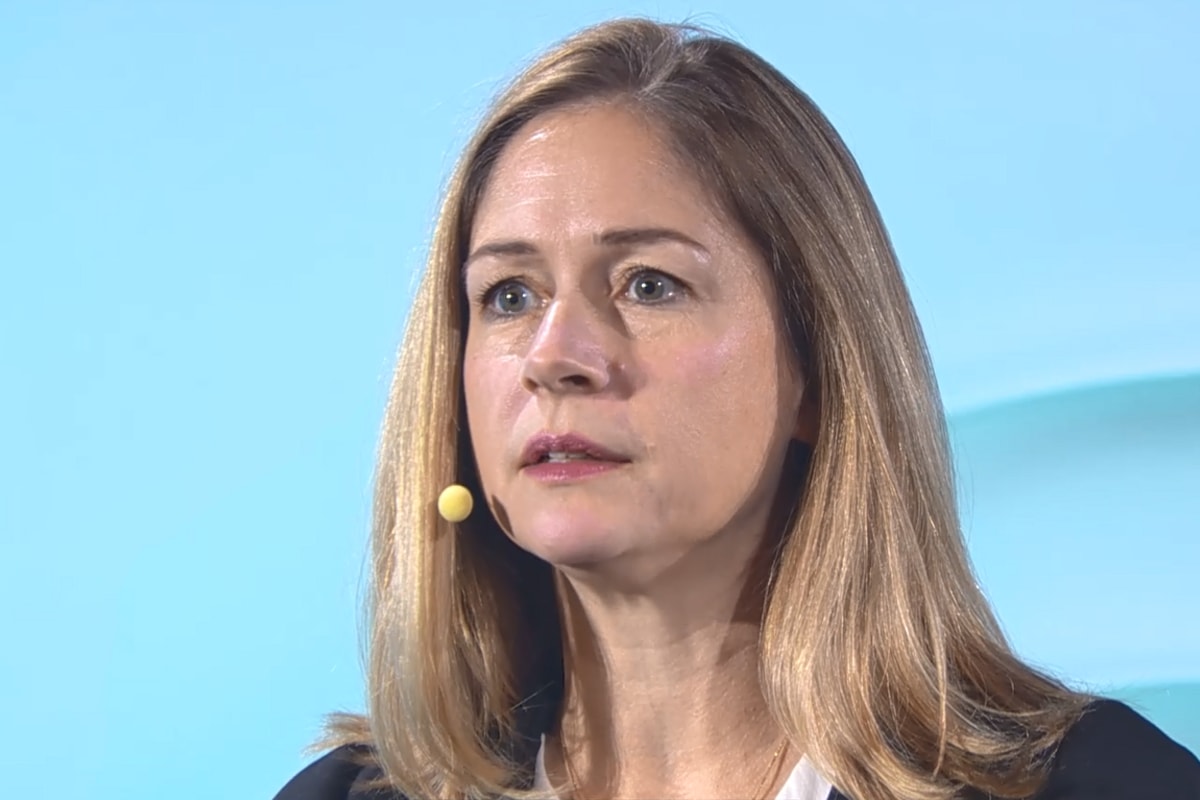As the financial sector rapidly approaches the November 2025 CBPR+ deadline, adopting the ISO 20022 global payment standard has never been more essential. With the industry moving forward, now is the time to act.
CBPR+ update
ISO 20022 adoption continues to gain momentum, with the average daily payment instructions now exceeding 1.6 million – nearly double the figure from March 2024. This growth is driven by a 50% increase in the number of BICs (Bank Identifier Codes) adopting ISO 20022. While these figures demonstrate significant progress, there is still work to be done. With just over six months remaining until the deadline, time is of the essence.
Whether you have completed your migration or are still in progress, it's crucial to share these insights with your peers and counterparts to ensure collective readiness for the upcoming transition.
Three key considerations for the November 2025 deadline:
1. Know how you will be impacted to avoid disruption to your clients
Use our ISO 20022 toolkit to check how you will be affected once the co-existence period comes to an end.
2. What steps you need to take to be ready
Use our ready-made project plan with our Project Navigator tool.
3. Start testing
Perform testing and validation on your changes to ensure there are no unexpected surprises when you go live. And, be aware of and test your systems against the additional network validated rules for Contingency Processing for category 1 and 2 payment instruction messages, for which the advance information is included in the SR2025 Release Guide. The availability dates of the test environment are listed on swift.com.
FINplus RMA Bootstrap 2025
The FINplus RMA bootstrap for 2025 has been scheduled for 29 November 2025, with 6 December 2025 as a back-up date. The bootstrap is being organized after the standards activation of 22 Nov 2025 date, to allow customers to avail of in-flow translation before enabling the bootstrap and since messages being added to the bootstrap this year, already exist on the network.
Like previous years, the bootstrap this year has two components:
- Rulebook accession Bootstrap:
- A pain.001 will be authorized if a FI-to-FI MT101 is authorized.
- This is for inter-bank relationships between Supervised (SUPE) and Non-Supervised (NOSU) institutions who have acceded to the ISO payment relay rulebook, the e-order is available, and the cut-off is 1 Oct 2025.
Access e-order
- Opt-in Bootstrap:
- Each of the following, camt.052, camt.053 and camt.054 will be authorized based on analysis and existence of any of FIN CAT9 traffic from January-July-2025.
- This is for customers who select this opt-in camt bootstrap using the opt-in order form, this is available, and orders will need to be put in before 31st July 2025.
Opt-in order form
References
In-flow translation will support FI-to-FI pain.001 to MT 101
The FI-to-FI pain.001 (single instruction) to MT 101 translation document is already available in MyStandards at the level of the CBPR+Collection 2025 as an advance notice.
The Translation portal will be available in July 2025.
The In-flow translation service overview will be updated in July 2025 to indicate the support of FI-to-FI pain.001 to MT 101 translation in addition to the existing Corporate pain.001 to MT 101 translation.
In July (pilot) and November (live), every Financial Institution will be automatically opted-in this new pain.001 translation and it will not be chargeable at this point. Institutions who have opted-out from all In-flow translation messages will continue to be opted-out for pain.001 unless they submit a request to be opted-in.
Replacing payment advice MT103/202 messages with camt.054
Institutions are currently misusing the MT103/202 to inform their clients that their account has been credited or debited. The correct usage should have been using statement messages. With the CBPR+ migration, these MT103/202 must be migrated to camt.054 (and not to pacs.008/009).
To support the receiving customers who cannot process the camt.054, In-flow translation will add in the camt.054 an embedded MT103/202 based on data provided by the sender.
This process is documented in “Bespoke Camt.054 to MT103 202 Translation_22April2025.pdf” located in MyStandards.
Payment application providers must adapt their systems to send the camt.054 ready for the new translation rules.
Webinars
We’ll continue hosting regular webinars throughout the year to support your preparation for the end of the coexistence period. Upcoming session dates are available here.
Training and other key learning resources
We’re offering both virtual and in-person ISO 20022 and CBPR+ training sessions globally. Visit our training catalogue to find the session that best suits your needs. For those seeking to gain a deeper understanding of the CBPR+ migration, Swift Smart offers a range of learning modules for you to explore at your convenience.
CBPR+ and SR 2025 milestones
The final edition of SR2025 CBPR+ UGs, Advanced Edition UHB and Translation Rules Advance Notice are published on MyStandards in the CBPR+ SR2025 (Combined) collection. The Readiness Portal CBPRPlus SR2025 (Combined) has been updated together with the updated UGs.
As a reminder, here are the steps you need to take to access CBPR+ information on MyStandards:
- Register as a swift.com user.
- Use your swift.com username and password to log in to MyStandards.
- Access CBPR+ information via the CBPR+ landing page on MyStandards.
- To access the CBPR+ UG Collections and relevant Readiness Portals:
In the CBPR+ Group, click the ‘Request Access’ button to join the Community (approval is automatic), which will then grant visibility to all the information within the CBPR+ Group.
Market Infrastructures: Building a stronger global network
- The momentum for ISO 20022 migration continues to grow, with more domestic communities adopting the new standard.
- We continue to see Payment Market Infrastructures (PMIs) prepare their own domestic solutions to enable ISO 20022 for payments – with many intending to migrate later in 2025. Most recently we saw Chile, Lesotho, and Norway celebrate successful migrations, meaning that 32% of Swift connected PMIs have now enabled ISO 20022 for their participants. These PMIs account for an impressive 75% of Swift’s global PMI traffic volume.
- Swift’s ISO Accelerator Pack remains a valuable resource for helping PMIs fast-track their migration and realise the benefits of ISO 20022 adoption.
Case Management: Transforming Exceptions and Investigations
The enhanced Case Management service, launched in November 2024, is designed to revolutionise how banks manage exceptions and investigations (E&I). It promotes operational efficiency by centrally facilitating the exchange of messages for both E&I and payment cancellation (Stop and Recall) purposes.
By transitioning from point-to-point messaging and unstructured formats like MT 199/299, the service now offers:
- Structured ISO 20022 messages (camt.110/111), developed for standardisation and enhanced clarity.
- Centralised and streamlined processes, which reduce costs, improve customer experience and protect reputations.
Key highlights
- Successfully piloted by 31 banks and 5 vendors.
- Now available to all banks on an opt-in basis, with 7 banks already live as of April 2025.
- Over 170 Case Management subscriptions submitted as of April 2025.
Adoption timelines
- November 2026: All financial institutions must be able to receive camt.110 messages with an embedded MT 199 (in-flow translation) through Case Management. All payment cancellation requests and responses must be routed through Stop and Recall/ Case Management (supports MT and ISO 20022 formats).
- November 2027: All financial institutions must send and receive E&I messages (camt.110/camt.111) through Case Management (no in-flow translation support). All payment cancellation requests and responses must be in ISO 20022 formats (camt.056/ camt.029).
MT messages for E&I and payment cancellation purposes will be either removed or retired in November 2027.
For more information on the migration timelines, please refer to this KB article.
Visit the Case Management Support Page to learn more about Case Management.
Enabling a seamless payments experience for corporates
As of November 2024, pain.001 messages are now available for corporate-to-bank exchange for all Standardised Corporate Environment (SCORE) participants. And we are expanding to include cash reporting through standardised cash management messages.
These new capabilities allow richer data capture at source and support end-to-end data preservation throughout the payment chain from initiation to reconciliation. By extending ISO 20022 functionality to SCORE, we’re enabling operational efficiency and opening new doors for innovation across the corporate community.
Key enhancements for corporates
- Rich data capture: ISO 20022 allows for more detailed and structured data to be captured directly at the source, improving transparency and operational workflows.
- Payment initiation via FINplus: Corporates can now leverage FINplus for seamless payment initiation with their banking partners.
Learn more
We’re also continuing to work with financial institutions to enhance their ability to offer ready-made services to corporates, thus ensuring a superior payments experience for corporates.
To help corporates take full advantage of ISO 20022, we’ve provided:
- ISO 20022 Usage Guidelines to ensure smooth adoption.
- A dedicated support page on the Knowledge Centre for quick access to tools and insights.
- FAQs to keep you informed and prepared.
GPI and Universal Confirmations Traceability Campaign
Swift has launched a targeted service management campaign from January 2025 for Swift GPI and Universal Confirmations (UC) customers.
The success of Swift GPI is underpinned by not only the unique end-to-end transaction reference (UETR), but also the provision of status updates and confirmations by participating financial institutions – as well as SUPE and PSPA customers who are mandated to provide confirmations as part of the Standards Release 2022 Universal Confirmations mandate.
As the importance of end-to-end transparency, certainty and speed continues to increase, Swift is committed to driving continuous improvement to meet the industry’s demands for faster, more transparent transactions.
We have launched a targeted campaign to ensure that confirmation rates remain high, and to improve them where possible, ensuring that all institutions meet the minimum traceability service level agreements and requirements for Swift GPI and UC.
Swift is launching an email campaign at BIC 8 level to:
- Any Swift GPI customers not currently meeting the service level agreement to provide confirmations for at least 90% of their received Customer Credit Transfers within 4 hours of the credit entry on the creditor’s account and no later than the same day to the Tracker.
- Any Universal Confirmations customers not currently meeting the service level agreement to provide confirmations for at least 80% of their received Customer Credit Transfers in less than two business days from the Interbank Settlement Date.
We are sending emails to all customers that are not compliant with the Swift GPI or UC confirmation requirements explaining the scope of the campaign and expectations for customer action.
Learn more about Swift GPI
Release of Payments Efficiency Data Insights in Observer Insights and Analytics
Observer Insights is a data-driven intelligence tool designed to assist Swift GPI customers in monitoring their adherence to the Swift GPI rulebook. Observer Analytics enables in-depth analyses of payment transactions, focusing on routing, speed, and deducted charges. Launched on 8 April, the new Payments Efficiency Insights and Analytics is available within Observer, enhancing your capabilities with actionable data and visualisations. These new insights make it easier to measure and improve your payment efficiency across your FIN and ISO 20022 flows, while tracking performance against global industry standards such as the G20 targets for cross-border payments.
For further information, please consult the Observer Insights user guide or the Observer Analytics user guide.
Keeping Your ISO 20022 Journey on track with Quality Data
With the adoption of ISO 20022, the focus is shifting from format readiness to extracting real value from structured data. One area that continues to drive efficiency and deserves ongoing attention – is data quality.
Swift’s Data Quality Analytics is here to help. Purpose-built for ISO 20022, it allows institutions to assess how well their payment messages are performing in terms of completeness, consistency, and richness. These insights can highlight opportunities to reduce delays, avoid costly investigations, and improve processing performance.
The value of this tool is immense. It supports financial institutions in making their ISO journey smoother and more impactful, every step of the way.
Whether you've started your migration or fine-tuning structured message usage, the tool brings visibility into the state of your data quality and helps you optimise.
Small improvements in data quality can lead to big gains in efficiency. And the right tools are already at your fingertips.
Visit the Knowledge Centre or subscribe to Data Quality Analytics today.
Partners corner: Payment application providers and Case Management
Business application providers shall prepare their systems to be ready for SR2025 testing as of July 2025. This release brings forward – to name a few - the Hybrid Address format in pacs messages, additional FIN validation rules for Contingency Processing, the introduction of the FI-to-FI pain.001 relay and the exchange of camt.054 Debit Credit Notification with a new optional keywork in field Notification[1]/AdditionalNotificationInformation.
Case Management roadmap introduces a more efficient way to manage E&I and applications shall prepare to process the camt.110/111 messages.
Scotiabank has made the leap to ISO 20022
Scotiabank is embedding ISO 20022 to improve data quality, streamline reconciliation, speed up cash application, and reduce manual work – making operations more efficient for clients. The bank is actively involving clients through advisory boards and feedback sessions to shape its ISO 20022 transition roadmap, focusing on solving pain points like reconciliation and operational inefficiencies. The upgrade also boosts compliance and ensures system interoperability, supporting a seamless and future-ready payment experience.
Learn more



